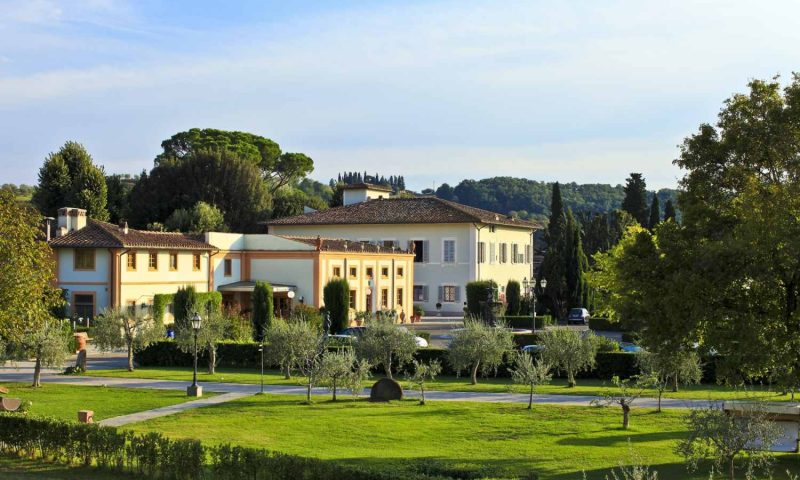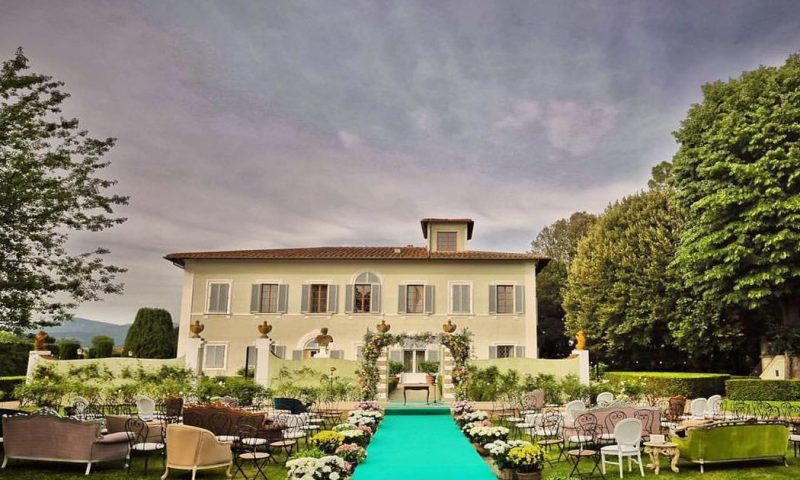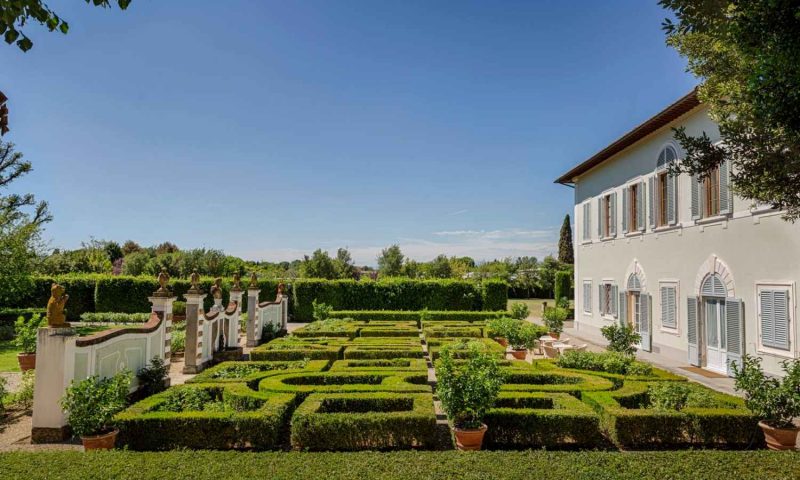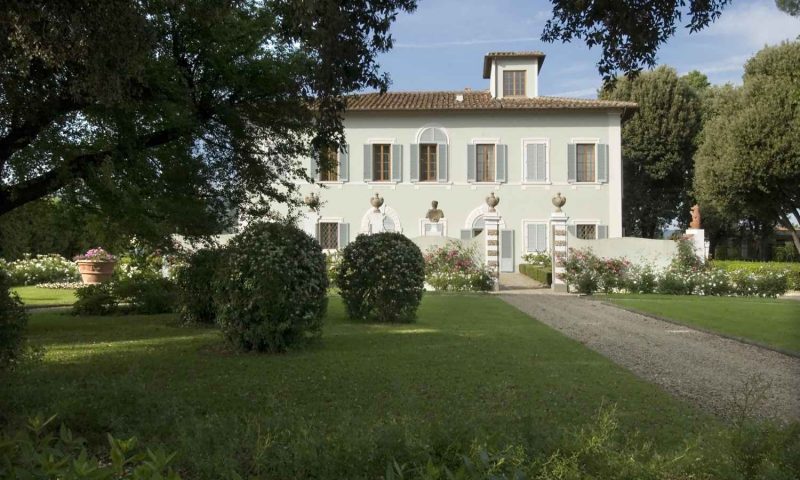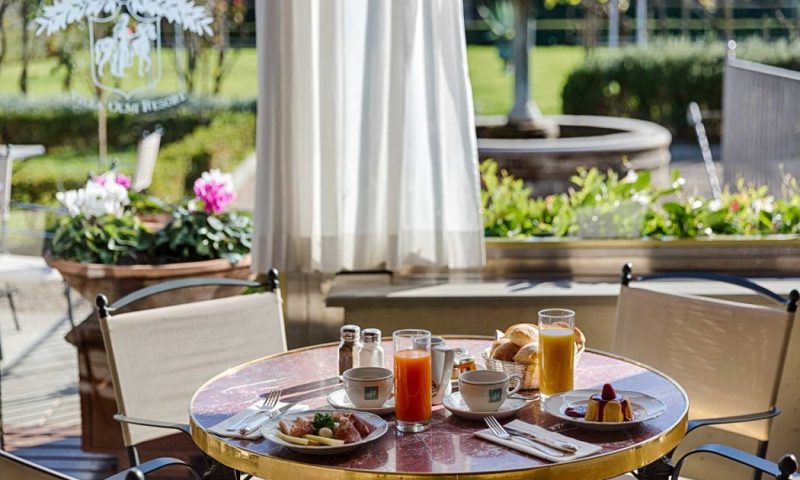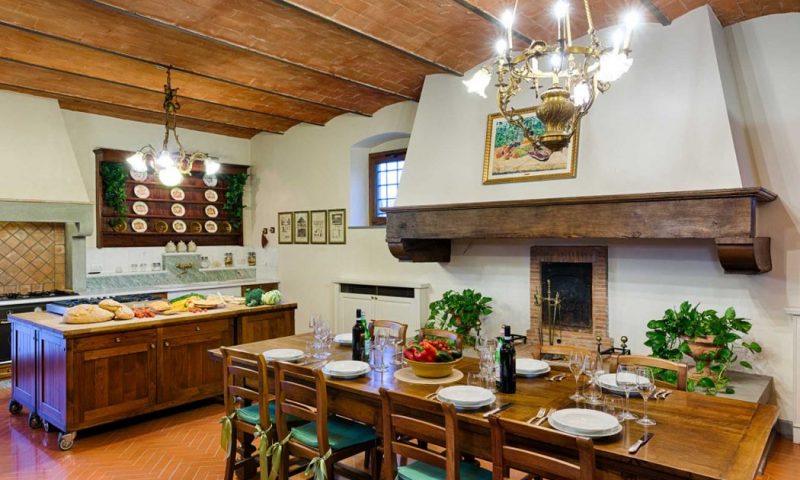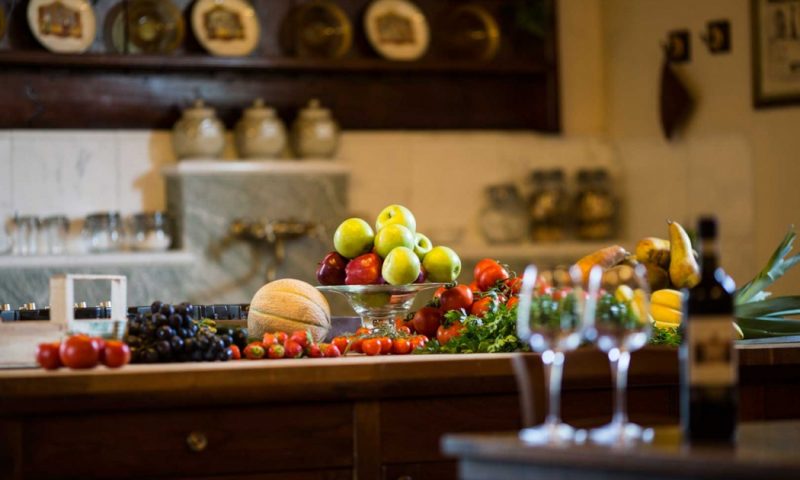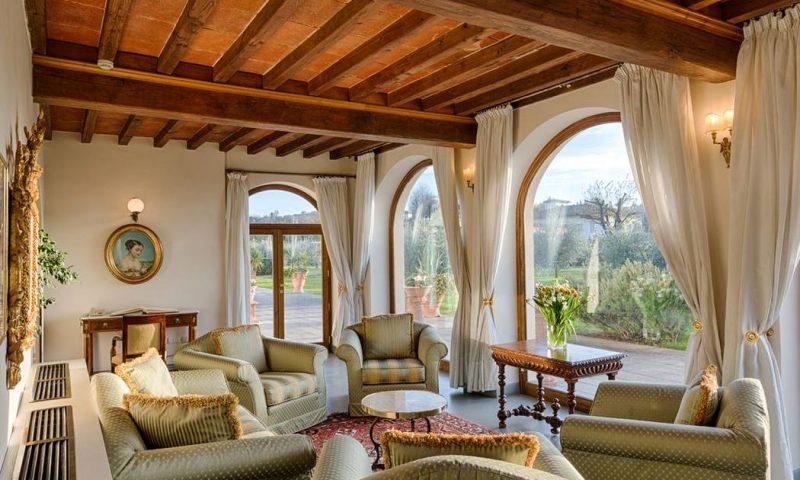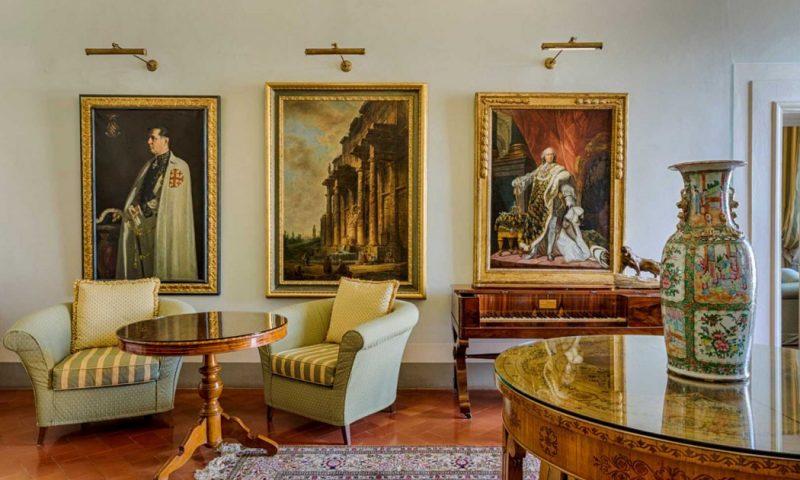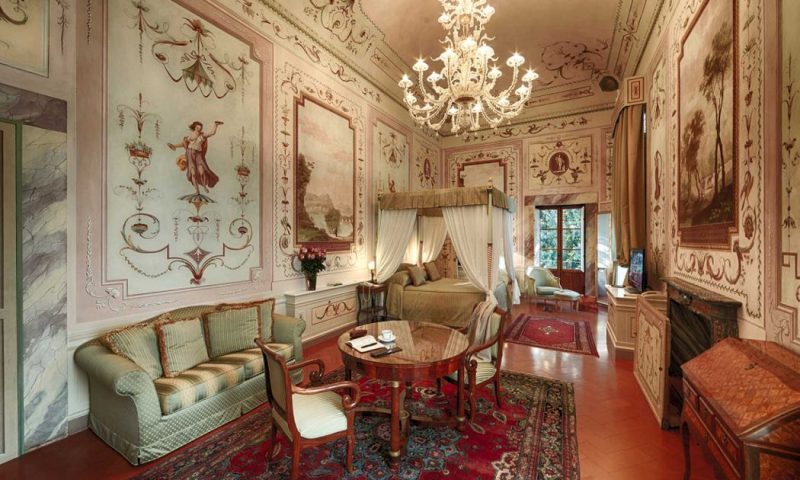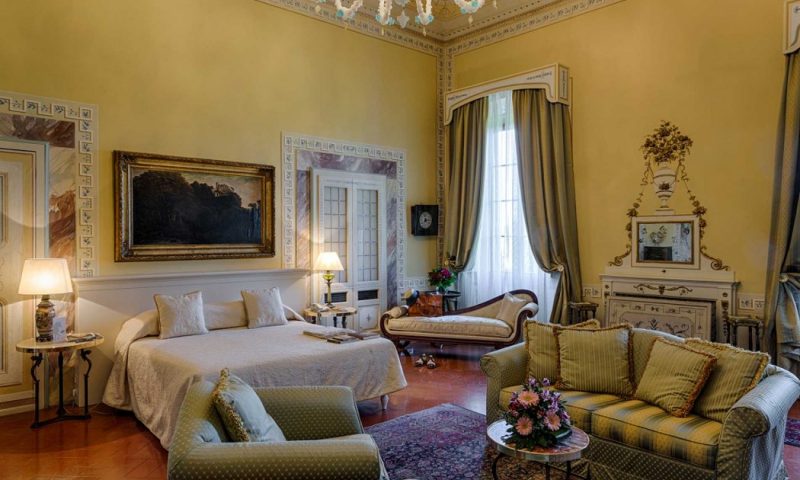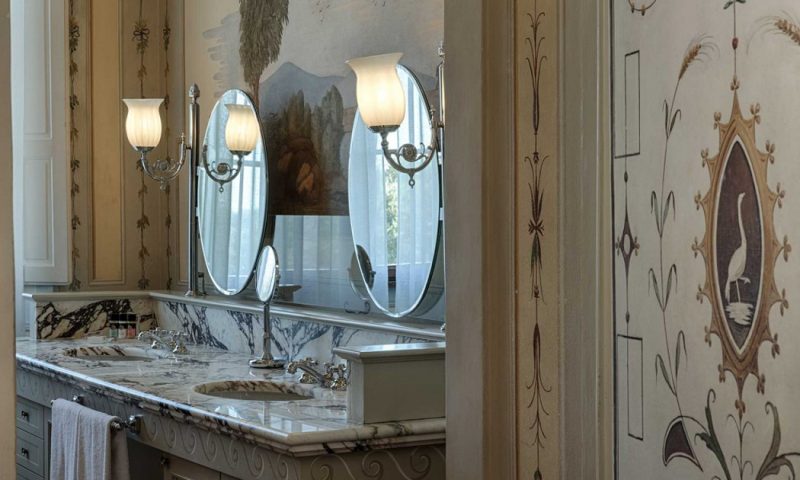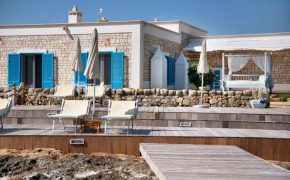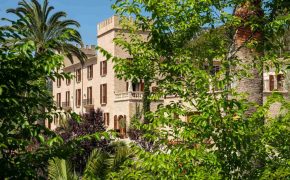“A hotel like those of the past”, “A slice of heaven”, “It feels like home”, “A relaxing refuge”, “Like something from a fairy tale.” With these words, we’re letting our guests tell you about the unique experience you’ll have when you stay at Villa Olmi Firenze.
A perfect balance between history, the history that took place between the walls of the 18th-century Villa, and modernity in the services offered. An excellent compromise between the city – the historic centre of Florence is just 4 km away – and the countryside atmosphere evoked by the lush grounds and gardens that provide the setting for Villa Olmi.
The Villa Olmi Hotel opens its doors to all those guests who’d like to have a holiday in a natural setting with greenery, just steps from one of the most visually striking cities in the world.
Villa Olmi Firenze is the perfect compromise between city and countryside: located in a setting with old trees and Italian gardens, visitors can experience the peaceful atmosphere of past eras, and yet enjoy the endless stimuli offered by the city centre.
Villa Olmi has undergone extensive restoration that respected the original architectural features, styles and materials of the past, working in collaboration with craftsmen skilled in traditional techniques. The restoration has recreated the incredible atmosphere that Villa Olmi must have had in the late 18th century, during the estate’s finest days.
Various features have been brought to light, including the old frescoes, now framed in elegant stuccoes, and vaulted brick ceilings in the cellar. The furnishings include a selection of antiques, fine wall tapestries and Murano chandeliers.
In the green spaces, the Italian garden has been recreated with its elegant geometries of hedges and flowers, along with the hortus conclusus, the medieval garden, more intimate and contained.
Fattoria, Villa and Colonica are the three units that make up Villa Olmi Firenze, in a unique and charming setting where typical Tuscan style – with its exposed beams and terracotta flooring – is combines with the uniqueness and prestige of the most ancient rooms.
LOCATION
Set in a centuries-old park, where the magic of the countryside fills the air, just on the edge of town, Villa Olmi Firenze is the perfect starting point for an all-Tuscan holiday. Just 4 km from the centre of Florence, easily reachable by car or taxi, Villa Olmi offers an unparalleled approach to the city and the beauty of the region.
A few hundred meters from the Firenze Sud motorway exit, from Villa Olmi you can easily reach Chianti country. There you can explore wonderful wineries and enjoy the local products, as well as the towns of Siena and San Gimignano, Pisa and Lucca. All the Tuscan provinces are less than an hour’s drive from the hotel.
ROOMS & SUITES
Typical Tuscan style, exposed beams and terracotta flooring. These are some of the features that characterize the rooms in the farmhouse (Fattoria) and the country house (Colonica). In each unit, visitors can perceive the careful research into the typical materials of our area, and the restoration of ancient furniture that recounts the history of this ancient residence.
In the historic Villa, with 18th century frescoes and stucco work brought to light by the restoration, illuminated by Murano glass chandeliers, there are 12 rooms, each unique.
The Deluxe, Junior Suite and Suite make up the offer of the Villa where, each time a visitor opens a door, they encounter magical scenery, full of history, with attention to detail and intimate hospitality. The uniqueness of these rooms, each one different from the other, makes it perfect for a romantic and special stay.
SUITE VILLA
The suites are the quintessence of Villa Olmi Florence. The elegant rooms with their unique decorations include the master bedroom, living room area and bathroom marble with Jacuzzi tub.
The choice of the Suite Villa is for those who want to enjoy the luxury of a holiday immersed in the splendour of a historic residence, savouring every detail of the history, luxury and sophistication.
JUNIOR SUITE VILLA
Frescoes on the walls that speak of the Villa’s precious features. Unique furnishings, the result of a long search to make every room special; spacious bathrooms in marble where you can enjoy a relaxing bath at the end of the day, in the Jacuzzi tubs.
The three junior suites are all sumptuous, without sacrificing the hospitality that makes every guest at Villa Olmi Firenze feel spoiled and pampered.
DELUXE VILLA
There are six Deluxe rooms in the Historic Villa. Each is unique in its furnishings and choice of colours, and illuminated by gorgeous Murano glass chandeliers, in a constant quest for elegance and good taste. The large windows overlook the garden surrounding the Villa or the splendid “farm” building, in a tranquil setting that is pure relaxation.
SUPERIOR ROOMS
The superior rooms are located in “La Fattoria” and are the best choice for guests who want a spacious room with every comfort. Canopy beds, double beds or twin beds, the superior rooms are elegant and equipped with a classic taste in furnishings where every detail is chosen with the utmost care. The bathroom in marble is available with a Jacuzzi or shower.
THE COUNTRY HOUSE
A perfect combination of style and hospitality, typical of the hotel, but also the space and comfort of a real home. The farm is an ideal solution for families and small groups looking for the comforts of a beautiful Tuscan villa, just a few kilometres from the centre of Florence, in a wonderful setting where everything is within reach.
There are two apartments furnished in Tuscan style each with four large double bedrooms (each with its own bathroom), a living area and a kitchen where guest can prepare wonderful dinners in company, or demonstrate the secrets of Tuscan cuisine in a cooking class held by our chef. The two apartments can become adjoined on request.
RESTAURANT IL CAVALIERE
A ceiling with visible brick work, windows that frame the walls, with wines from the best cellars on display. If you decide to taste Villa Olmi’s cuisine, this is the place. You’ll be welcome at the Il Cavaliere restaurant, where tradition meets our Chef’s desire to experiment.
Our cuisine is a tour indissolubly linked to the land and the quest for basic ingredients that also respect the season. Adjacent to our kitchen is a small vegetable garden, set in the greenery of the gardens surrounding the farm, our example of the “zero-kilometre philosophy”.
During the summer season, guests can dine outdoors, under the pergola, in a private corner of Villa Olmi Firenze’s greenery. Overlooking the gardens, where aromatic plants scent the air, the veranda is the perfect place to enjoy an abundant breakfast, with a delicious choice of homemade baked goods and all types of cured meats and cheeses.
COOKING CLASS
A unique experience for anyone who wants to experience the art of Tuscan cuisine. Our chef will accompany you on a journey of the senses, made up of fun and unique flavours, in the kitchen of our “Colonica”.
WINE TASTING
A wine tasting session to discover the characteristics of the best Tuscan labels; all in a really evocative setting: the cellar of Villa Olmi, where guests can sip glasses of wine, accompanied by perfect pairings of cured meats and cheeses.
WEDDINGS IN FLORENCE
An eighteenth-century villa surrounded by a centuries-old park. A Banquet Hall in pale pink with stucco and Murano glass chandeliers. A room with barrel-vaulted ceilings, created in the ancient cellars.
A small private church for a few close friends and relatives. There are a number of spaces at Villa Olmi Firenze available for ceremonies and weddings. Our staff will help you choose the right solution and customize every detail of the event.
The Meeting Rooms at Villa Olmi Firenze respect the unique style of the historic residence, without sacrificing the most advanced technology. The hotel is the perfect setting for organizing incentives, meetings or business events in a unique environment.
It is also the perfect location for those who have to travel for work by car, not only because it is easily accessible from the motorway but also because it has a large free car park.
SWIMMING POOL
During the Summer season, accompanied by the heady scent of jasmine from the surrounding gardens, our guests can enjoy the pool, a place of pure relaxation.
FITNESS ROOM
There is an intimate fitness area with the latest equipment, available to the guests of Villa Olmi. Our park is also perfect for outdoor jogging.
THE HISTORY
Villa Olmi is situated in an area of Florence, Pian di Ripoli, which was so verdant and lush in the Middle Ages that the most well-off Florentine squires often had large farm estates there.
The River Arno, which fl ows half a kilometre (550 yards) from the villa, often fl ooded these lands and helped to make them fertile thanks to the silt deposits it left behind. The plants that grew there flourished so much that the area, entirely covered by orchards and cultivated fields, was known as the “Pomario di Firenze” (the fruit orchard of Florence).
As well as planting immense crops, the richest Florentines also built their summer residences in this area, refuges where they could devote themselves to the otium of the ancient Romans: so, not just rest and relaxation, but also studies, art and contemplation.
In these villas, the landowners of Florence – the centre of which is just 6 kilometres (almost 4 miles) away, at that time by horseback – organized banquets for visiting guests, who could enjoy agreeable leisure pursuits in a much more healthy and pleasant rural environment than the city, which could be very unhealthy in the Middle Ages.
Suffi ce it to think of the Plague that struck in 1348, killing four fifths of Florence’s inhabitants, giving Giovanni Boccaccio the cue to write his Decameron, one of Europe’s most important late medieval works, in which ten young people flee Florence to avoid contagion and retreat to a villa in the countryside where they pass the time telling each other stories.
The countryside was therefore a much sought-after place, and those who could afford it spent the hot summer months, which were more oppressive and difficult to tolerate in the city, in these pastoral residences.
Without counting that at the time land was the greatest source of wealth: while modern investors buy property, shares or businesses, then the most important asset they had to make the effort to preserve, expand and pass down was the land, all the more so in a fertile area like Pian di Ripoli.
The first known owners of a noble residence situated on the land of the present-day Villa Olmi were the Ardinghelli, a family of rich bankers and tradesmen: in 1427 in the city’s land register they declared that they possessed a farm with a house for the lord and one for the workers, situated close to the Pieve di Ripoli church, with a well and fields cultivated with grain, barley and beans, plus a vineyard and a fruit orchard.
In all likelihood, their villa was knocked down in 1529, when Spanish troops under the guidance of Philibert de Châlons, Prince of Orange, approached Florence to lay it to seige. The house would not have been devastated by the assailants, as might be thought, but by the Florentines themselves: they decided to destroy all the buildings in a fi ve-kilometre (three-mile) range from the city walls, so that the enemies could not find shelter anywhere.
Benedetto Varchi, man of letters born at the beginning of the sixteenth century who lived through the events, wrote that it was the villas’ owners who razed them to the ground in fury, uprooting and then devastating all the fruit trees with hatchets, as well as the vines, ornamental plants and olive trees, to leave the besiegers empty-handed.
After the siege, the Ardinghelli family villa was probably rebuilt, because it is known that in 1565 it passed, along with all its lands, to the Mozzi family: they were the ones who looked after it for over 300 years and embellished it with signifi cant restoration and decoration work in the eighteenth century, providing the basis for the present-day hotel layout.
The Mozzi were a rich Florentine family who owned an old palazzo in the centre of Florence, in what is now in fact known as Piazza dei Mozzi, in the Oltrarno district not far from Ponte Vecchio. Palazzo Mozzi had a large garden which stretched as far as the city walls (at San Miniato al Monte), more or less corresponding to the gardens of Villa Bardini today.
At that time, this city residence was the most important in Florence, and there was no prince, ambassador or cardinal visiting the city who was not hosted by the Mozzi clan. The family had given Florence many important fi gures, amongst whom numerous members of the city government, a beatifi ed saint and a bishop, Andrea dei Mozzi, whom Dante placed in the XV canto of his Inferno.
Thanks to their wealth, over time the Mozzi family managed to put together a great collection of artworks which are now on display in important museums around the world: according to some nineteenth-century historians, they possessed a bas-relief of a Virgin and Child by Mino da Fiesole (c. 1462-66), a Mona Lisa (an alternative version to the one housed at the Louvre, because Leonardo never let the original – set to remain in France after his death – leave his side), The Adoration of the Magi by Carlo Dolci (1649), a painting by Guido Reni, and then a Titian, a Correggio, a Ghirlandaio and many other masterpieces.
Hence, when Giulio dei Mozzi, member of the Florentine Senate, decided to extend the villa and modernize the property in 1781, he was able to use his vast artistic culture as inspiration to decorate the walls and ceilings of his estate.
The frescoes of landscapes and allegoric scenes that he commissioned, decorated by grotesques, were uncovered in 2006 for the benefi t of the guests of Villa Olmi, and the façades of the two main parts of the hotel were restored so as to reproduce the appearance that they might have had in the eighteenth century, when the building with the terracotta-coloured trimmings was a farm.
The busts erected on the roof are copies of the originals, placed for protection in a gallery linking the villa to the former farmhouse, under a beautiful red-brick vault. Giulio dei Mozzi carried out all the modernization work in just one year, and was so satisfi ed that upon its completion he had his coat of arms mounted in stone on the façade of the villa where it is still visible today, accompanied by a plaque with an inscription in Latin to remind posterity of how quickly the work had been done: Julius Mozzi / has aedes / anno S. MDCCLXXXI / inchoavit et perfecit.
It was in the following century, perhaps thanks to the more elegant appearance of the property, that he decided to change the villa’s name: until that moment the old maps had marked it with the simple name of “Villa del Mozzi”, while the locals referred to it disparagingly as the “Cloaca dei Mozzi”.
“Cloaca” is not a very fl attering name referring to the underground channels used to dispose of waste away from inhabited areas; in a word, the sewers. Yet there is no way it had earned that name because it was ugly: as is known, since the Middle Ages the place had always been green and lush, with a large noble residence and workers’ cottages around it.
So, where the nickname came from will probably remain cloaked in mystery. However, what we can be sure about is that, sometime before 1870, the property was given the much prettier name “Villa la Pergola”, referring to both the decorative structures used in gardens, and the vines, cultivated with excellent results on the Mozzi’s land, often used to cover pergolas.
That particular name hit the nail on the head. Indeed, the estate’s farming fortunes blossomed under its new owner Ippolito Pestellini, who had bought it from Count Adolfo Mozzi Del Garbo, forced to sell after having frittered away the family riches and fi nding himself in economic diffi culty.
Pestellini came into possession of the villa and its 400 hectares (1,000 acres) of land, which included various other farms in the surrounding area, on 3 February 1862. Even though he was a lawyer by profession, he was above all a farming technique enthusiast, spending his time studying and experimenting to improve the quality of the farm’s produce.
Also interested in wine, he had a vast vineyard planted opposite the villa and published numerous volumes on the subject, amongst which Il mio modo di fare il vino, Degustazione e commercio dei vini and Per la tutela del fi asco toscano.
Furthermore, he also entered and went on to be a very active member of the Accademia dei Georgofi li, a Florentine institution founded in 1753 which still promotes studies and research in the agronomic sector.
Under his expert guidance, the villa became the centre of a hugely profi table estate which as of 1870 won many awards, amongst which the gold medal at the Exposition Universelle of Paris in 1900. It was in this period that the villa changed its name again to adopt the current one.
The story behind it goes as follows. Pestellini had asked the municipality of Bagno a Ripoli to build a road to connect the Pieve di Ripoli church with the nearby Via della Nave a Rovezzano, bypassing the entrance to his residence which the road previously went by.
Inspired by the two giant elms (olmi in Italian) in the gardens, when the work was fi nished he named both the villa and the new road, still called Via degli Olmi today, after them. Initially, however, this created some confusion. In Pian di Ripoli, and on Pestellini’s estate no less, another villa and another road already existed with the same name, situated to the east of Villa Olmi: these were the large building known as “L’Olmo” in Via del Padule, located at the crossroads with the little road then known as “Viuzzo dell’Olmo”.
Any confusion disappeared though when L’Olmo progressively fell into ruin and, in 1924, the street was done away with as the local people hardly ever used it. As the decades went by, the descendents of Ippolito Pestellini abandoned the country villa and stopped farming, so the property experienced a slow and progressive decline.
In 1999 it was bought by the Lotti family who, aware of its historic and cultural value, started a lengthy project to restore the original architectural features, styles and period materials, with the aid of expert craftsmen skilled in traditional techniques.
The aim was to recreate at Villa Olmi the atmosphere that would have breathed at the end of the eighteenth century, after the modernization work carried out by Giulio dei Mozzi. So the frescoes from that period were brought to light, today framed by elegant stuccoes, as well as the brick vaults in the cellars.
Antique furniture was chosen to furnish the various rooms, with fi ne upholstery and Murano lamps. Outside the Italian garden, with elegant geometrical hedges and fl ower beds, and the hortus conclusus, that is, the more intimate and cosy medieval garden, have also been recreated.
Hotel Villa Olmi was inaugurated on 31 May 2006. Since then it has opened its doors to guests from all over the world wanting to spend a holiday in the countryside, just a stone’s throw from one of the most picturesque cities in the world.
